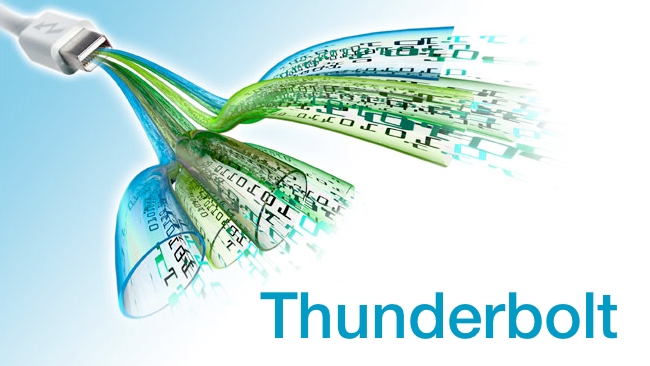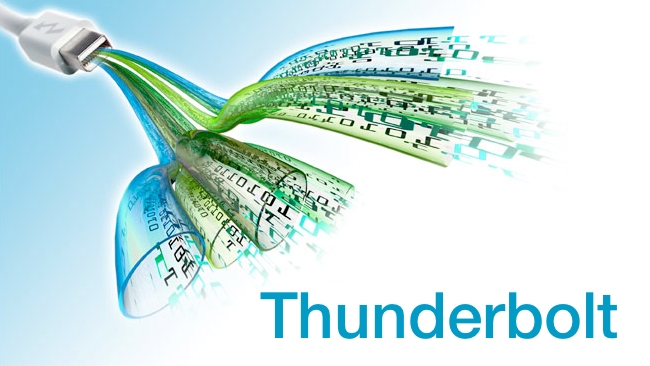
 Thunderbolt
Thunderbolt
Debuting early in 2011, the dual protocol Thunderbolt standard promised dramatically improved transfer performance between peripheral devices and even the ability to daisy chain up to six devices form one port. So why, two years later, is it still considered a marginal technology? Andy Stout reports
As the name suggests, Thunderbolt is fast, very fast, boasting transfer speeds of up to 10Gbps, enough to transfer an entire HD movie in 30 seconds or 1TB of data in under five minutes. There is, inevitably, a lot of extremely technical info about it all on the web, so if you want to dig down there are plenty of resources is a good place to start). Essentially though, as you will have already noticed, it essentially unites video and data protocols and uses a Thunderbolt controller to cram the PCI Express and DisplayPort signals into one signal, squirts them both down a cable along with DC power, and then unpacks the signal again via another chipset at the other end.
Up to six devices
Up to six devices can be connected via a single Thunderbolt port (essentially a rebadged Mini DisplayPort). And, for anyone reading this looking mournfully at multiple devices connected to their desktops and laptops via overburdened USB connections, on paper it reads like the answer to an awful lot of problems.
So, with Intel (the rights holder) and Apple both instrumental in its development, and indeed every computer Apple makes bar the MacBook Pro shipping with a Thunderbolt port just waiting to be activated, why is is still essentially a niche product nigh on two years after launch?
Expensive historically
Historically, cost is the prime reason. When Thunderbolt first launched, Apple charged $49 for a 2m cable, a price which provoked a distinct sense of online outrage, even amongst a user-base used to inflated prices. However, earlier this month that was dropped to a slightly more manageable $39, while a 0.5m cable has also come to market for $29. It’s still not cheap, but in fairness it has to be pointed out that there is a good deal of circuitry and firmware embedded in these cables (website iFixIt did a teardown and found a total of 12 chips amongst a sea of other small electrical components in each cable). A second generation solution from semiconductor manufacturer Intersil promised a new design with less components last year, and it looks like that new design has been successfully adopted and is reflected in the new pricing.
Second generation
Pricing has been an issue with the OEM manufacturers too, which explains the slight dearth of Thunderbolt-enabled tech hitting the market after a brief high-end frenzy in 2012. But again a second generation solution has been developed here, which looks to have produced a series of lower cost Thunderbolt controller chips. Despite a relatively quiet CES for the technology, some long-announced devices should actually ship in the next couple of months, including the long-distance optical cables that the format supports (an active optical cable provides for much greater lengths of up to 50m, though it doesn't provide power for bus-powered devices) and an increasing proliferation of docking stations for Apple laptops and other sundry breakout boxes.
Will this all help kick-start a slightly moribund market? Very possibly. Early issues with Intel’s licensing and certification process that operated as a bit of a logjam seem to have been sorted and the company has been dropping broad hints that it will open up the process as 2013 progresses.
More devices, cheaper cables and a technology whose time has well and truly come with the rise of 4k? 2013 could be the year that ThunderBolt finally strikes.
Tags: Technology


Comments